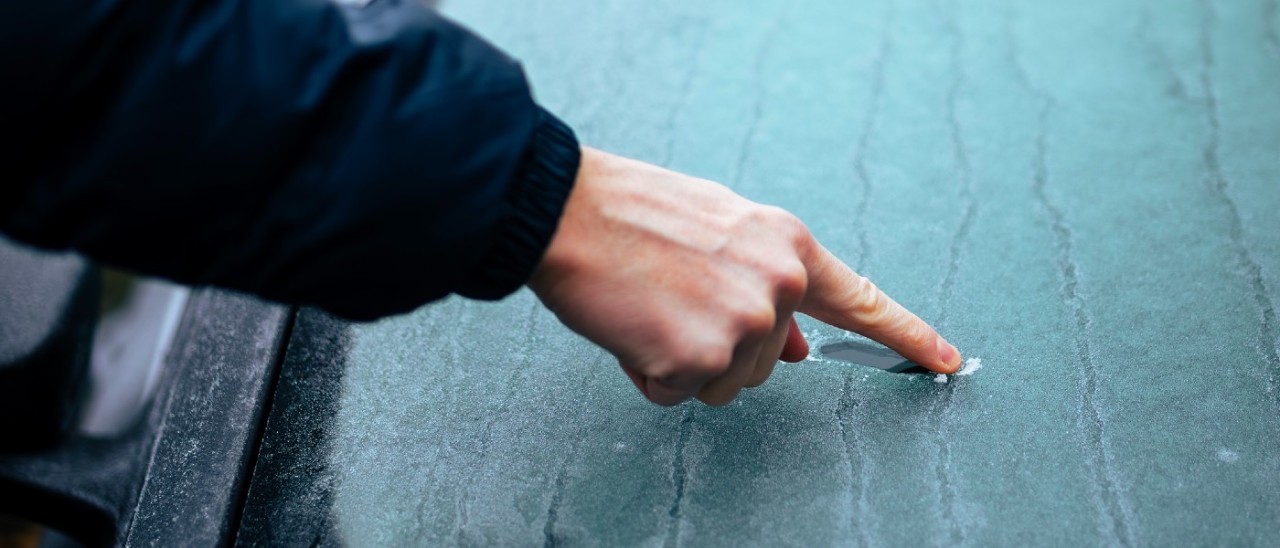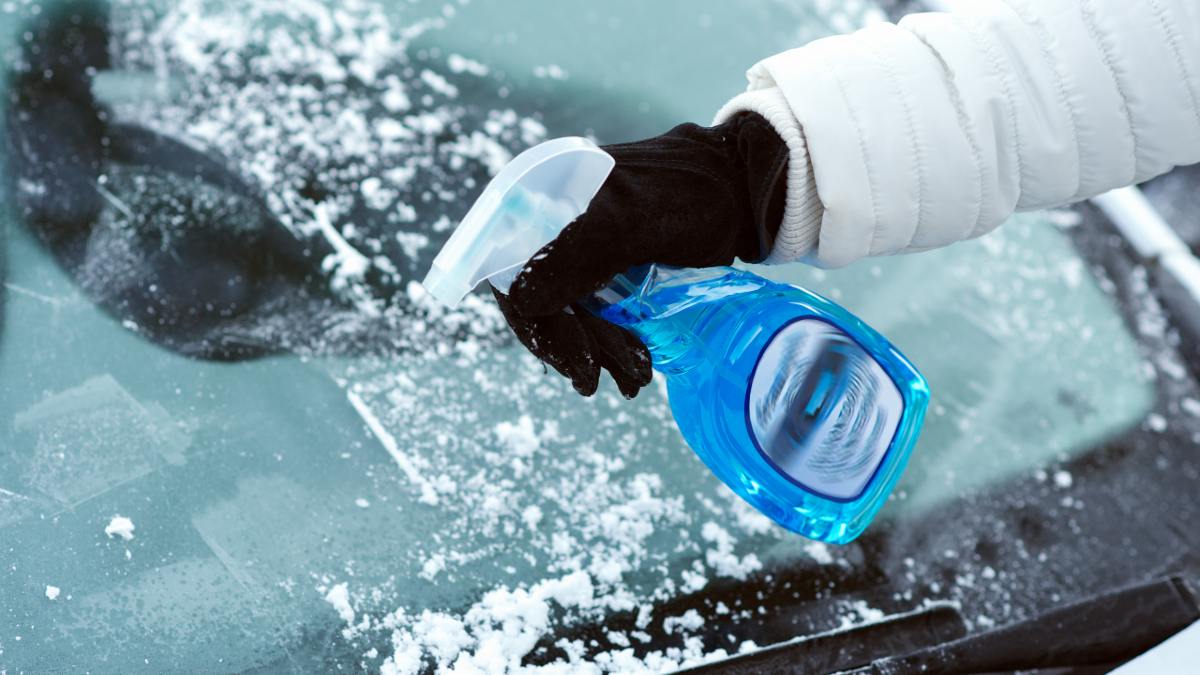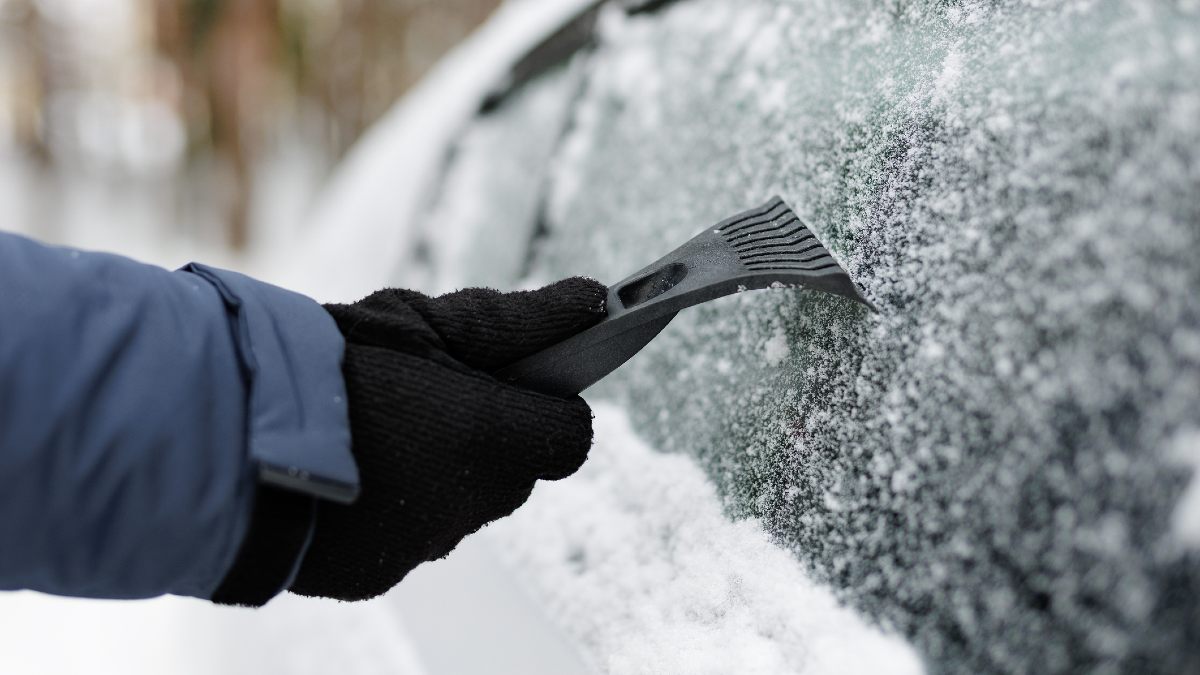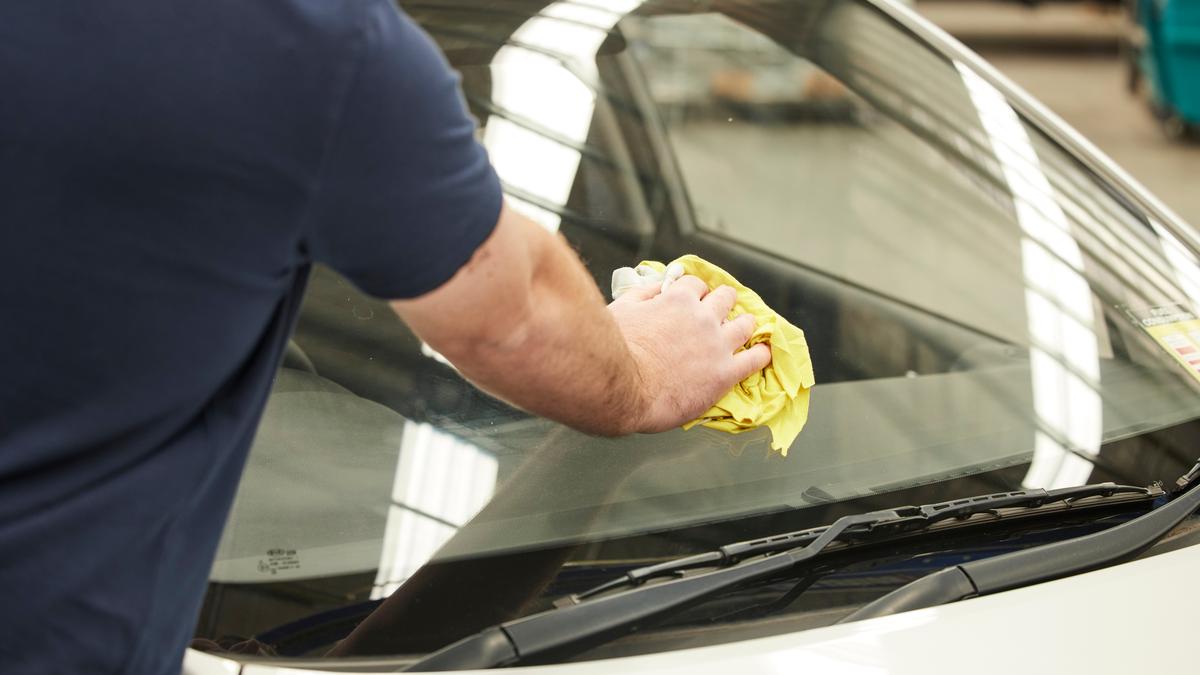Ever wondered what lane to drive in on a freeway or if you can overtake on the left? These are the road rules about driving on freeways in Victoria.
The best ways to remove ice from your windscreen

An icy windscreen is more than just an inconvenience; it can severely limit your visibility and significantly increase the risk of collisions. Follow this expert guide to safely remove ice without damaging your windscreen, and drive with clear visibility and confidence.
If you're rushing to work or another place in the morning, there's nothing more frustrating than ice on your windscreen. But it's important to completely remove the ice before you drive because a lack of visibility on the road is extremely dangerous. It not only increases the risk of road accidents, it makes it harder for you to react to potential hazards on the road.
Ice usually forms on your windscreen after a night of clear skies, calm conditions and very cold air. While there are many hacks shared online for removing ice, some of them could damage your windscreen and lead to costly repairs. Here are some practical, tried-and-tested tips to help you de-ice your windscreen on frosty mornings.
RACV's winter driving guides to help keep you safe
Jump to:

Commercial de-icing sprays safely defrost your windscreen and can be bought from most auto retailers. Image: Getty
What causes my windscreen to freeze?
Colder temperatures coupled with moisture in the air can lead to ice forming on your windscreen. Windscreens are particularly susceptible to frost forming in cold weather as glass loses heat quickly. When moisture droplets in the air touch the freezing cold glass, it forms ice.
Frost is most likely to form on your windscreen overnight when it is clear and cold (the air temperature needs to be 2.2°C or less) with no or light winds.
The best ways to defrost a windscreen
Commercial de-icing sprays
There are commercial products that can help melt the ice and stop it refreezing. Look for "de-icer" on the product label. It's important to follow the instructions on the container. Most solutions contain methanol, a form of alcohol, and protective eyewear is usually recommended. The product may also contain ethylene glycol, which is hazardous to pets, so keep the lid tightly closed when not in use, and store in a safe, well-ventilated place.
Ice scrapers
Ice scrapers are indispensable tools for removing ice from your icy windscreen. Start by using the scraper with a firm yet gentle hand, and avoid applying excessive pressure that could damage the glass. Begin from the top of the windscreen and work your way down, pushing the ice away as you go. For stubborn ice patches, try using the scraper's edge or corner for better leverage. Never use metal items to scrape ice off as this may scratch the glass.
Use your car's defrost setting
Start your car's engine and turn on the defrost function. Your car's heating system is not just for keeping you warm; it can also help remove ice from your windscreen. Activate the heater to its maximum setting. The warm air blown onto the windscreen will gradually melt the ice. To speed up the process, consider using the car's rear defroster as well.
Never leave your car unattended while the engine is running. According to Victorian Road Safety Road Rules, if you will be more than three metres away from the closest part of the vehicle you must switch off the engine. Some new cars have remote heating tech that allows you to have your heating active without putting your car at risk of theft. This means you can still be in your home as your windscreen is de-icing.
More windscreen de-icing tips
Lift up your windscreen wipers
Raise your windscreen wipers after parking your vehicle if you suspect your windscreen is at risk of icing over. This will prevent them from freezing to the windscreen.
If you find your wipers frozen to your windshield glass, spray some de-icer around them or use the defrost function. Attempting to use the wipers before they are completely de-iced may cause friction on the wiper motor and cause damage that's expensive to repair. You can also damage the blade rubber prematurely, if it's used on a dirty or frosted windscreen.
Don't forget to de-ice your side mirrors and windows
Just like your windscreen, your side mirrors, rear and side windows will need to be de-iced too so that you have good visibility when you start driving. You can use a de-icing solution and ice scraper to de-ice your side mirrors.

Ice scrapers are designed to gently remove frost without damaging the windscreen. Image: Getty
What not to do when de-icing your windscreen: common mistakes
There are some common mistakes that people make when trying to de-ice their icy windscreen. Here are some unwise practices, and why you should avoid them:
Don't pour hot water or warm water onto a windscreen
One of the biggest mistakes people make is using hot water or even warm water to de-ice their icy windscreen. While it may seem like a quick and easy solution, pouring hot water on a frozen windscreen can cause it to crack. The sudden change in temperature can lead to irreparable damage, resulting in costly repairs.
Don't use salt or vinegar to remove windscreen ice
Another mistake to avoid is using salt or vinegar to de-ice your windscreen. While these substances can help melt the ice, they can also damage the paint and glass of your car. Salt, in particular, can cause corrosion over time, leading to long-term damage to your vehicle.
Beware of online 'hacks' to remove ice from your windscreen
The internet is full of so-called 'hacks' for de-icing icy windscreens, but it's important to be cautious. Many of these hacks use unconventional methods or substances that can potentially harm your windscreen or vehicle. Hazardous substances can also pose health risks, such as serious eye irritation. It's always best to stick to tried-and-tested methods recommended by experts to ensure the safety and integrity of your windscreen.

Don't forget to remove any ice on your side mirrors, rear and side windows for maximum visibility. Image: Getty
How to prevent ice and frost on your windscreen
Prevention is often easier than a cure. These proactive measures can help prevent ice forming on your windscreen in the first place.
Park undercover
If you have access to a carport or garage, parking undercover should help reduce the risk of a frosted windscreen.
Use a windscreen cover
Investing in a good quality windscreen cover can save you a lot of time and effort in the morning. These covers act as a protective shield, preventing ice from forming on your windscreen overnight. Place the cover over your windscreen once you've parked your car. In the morning, remove it to reveal a windscreen clear of ice. Be aware, if you're visiting or live in alpine areas, or you're going on a skiing holiday, that heavy snowfall overnight may make it difficult to remove the windscreen cover.
Anti-frost windscreen spray
You can consider using anti-frost windscreen sprays. These sprays are specially formulated to prevent ice and frost from forming on your windscreen. They create a thin protective layer that repels moisture, making it easier to de-ice any frost that does accumulate. Anti-frost sprays are simple to use and can be applied before the onset of cold weather. Remember to follow the safety instructions on the container.
Check your windscreen regularly
Regularly inspecting your windscreen for any cracks or chips is crucial, especially during winter. Cold weather can cause minor cracks to expand, leading to costly repairs. If you notice any damage, it is essential to get it fixed promptly as small cracks can easily grow.
If you need windscreen replacement, chip repair or an integrity check, there are qualified professionals who can help. Additionally, make sure your windscreen wipers are in good condition and replace them if necessary. Faulty wipers can hinder your ability to de-ice and impair your visibility.
In regards to car insurance, windscreen cover is usually an optional extra, so check your car insurance policy to see if you're covered.

Inspect your windscreen regularly for damage - it's possible to repair small chips without replacing the entire windscreen.
Safety considerations when de-icing your windscreen
Most new cars have sensors in the windscreen for forward collision cameras and other driver assistance features, and frost or dirt can inhibit their operation. If the sensors are located on the front grill or bumper, frost and dirt needs to be removed to ensure these crucial systems keep working. Do not start driving until all sensors are operating correctly.
Follow your manufacturer’s advice for keeping sensors clean and read the manual to ensure you understand how the system works in your car. If you have any issues you can't solve, contact roadside assistance or a trusted mechanic for help.
If you turn your engine on to help de-ice your windscreen, do not leave the vehicle unattended. As stated previously, it's illegal to leave a vehicle running if you will be more than three metres away from the closest part of the vehicle. It also increases the risk of your vehicle being stolen. Always remain in close proximity to your car and never leave it unlocked or running.
Before driving, it is essential to have clear visibility through your windscreen. Completely remove all ice and frost to have a clear line of sight and stay safe on the road.
The information provided is general advice only. Before making any decisions please consider your own circumstances and the Product Disclosure Statement and Target Market Determinations. For copies, visit racv.com.au. As distributor, RACV Insurance Services Pty Ltd AFS Licence No. 230039 receives commission for each policy sold or renewed. Product issued by Insurance Manufacturers of Australia Pty Ltd ABN 93 004 208 084 AFS Licence No. 227678.


